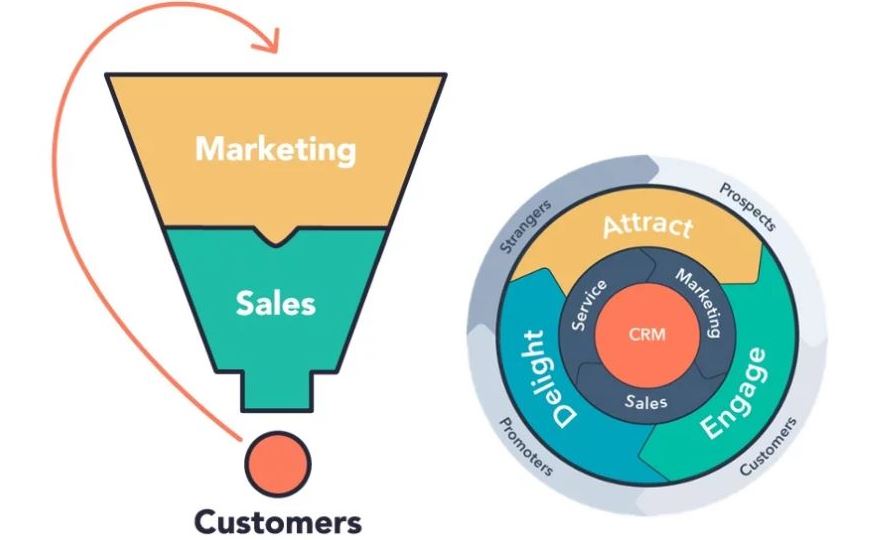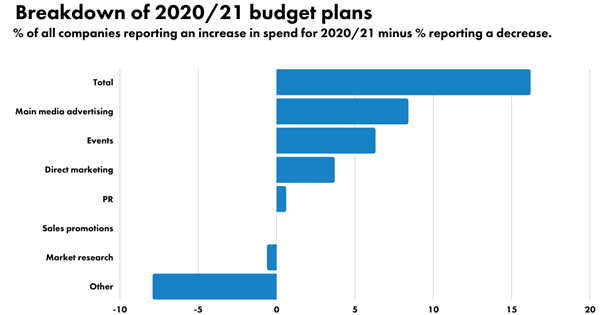The Surprisingly Huge ROI of Sales & Marketing Alignment
The Sales Team says that the Marketing Team (or "Colouring-in Department") provides poor quality leads and the Marketing Team says that the ("lazy and overpaid") Sales Team doesn’t follow up leads fast enough or consistently enough.
In many organisations sadly, both teams are right. The result is a business that is haemorrhaging opportunities. How do we resolve that problem?
When Sales and Marketing teams align and to build a harmonious ‘Smarketing’ team, all kinds of good things happen. According to Marketing Profs, organisations with tightly aligned sales and marketing functions enjoy:
- 36% higher customer retention rates
- 38% higher sales win rates
- a 208% increase in revenue from marketing activity.
Yes, that's right. A 208% increase in revenues from marketing activity. Imagine getting three times the measurable results from your marketing... That's huge.
This slide deck from the TAS Group illustrates these benefits and more.
Four Steps to B2B Smarketing Alignment
There is a lot at stake. Sales and Marketing folks need to get together to work this out.
1. Create Ideal Buyer Profiles and Buyer Personas
Ideal Buyer Profiles are companies that are the perfect fit for our products or services. We can profile by:
- turnover
- no. of employees
- geography
- industry or vertical
Just as important as the ideal company buyer is the opposite – which ones are not the kind of company you want to do business with...
Then your teams need to collaborate again to build out (typically) three to six buyer personas that might work at the ideal company. These are the people who will influence and collaborate to make the decision to purchase of your product or service. Detailed Buyer Personas – the subject of many blogs here at Intergage – are critical to understanding buyer needs and crafting messages that work. We're going fishing and we need the right bait for the right fish.
And at each stage you need your Sales and Marketing Teams to agree what your personas look like, what pains and challenges they face and what a good-fit company looks like.
We need to know which exactly which species of fish we are hunting, how mature (big) they are, where they live and which baits will appeal to them.
2. Define where the Hand-off is between Marketing and Sales
Next your tour teams have to agree where the handover point line is drawn.
There are really three elements to drawing up these lines:
- fit (see point 1 about personas)
- engagement
- stage of buyers journey
Engagement is clearly key to qualifying a prospect – a customer who signs up to your email newsletter is not necessarily ready to buy.
Marketing automation systems score engagement (and understand where a prospect is in their buying journey) by monitoring the content that they are engaging with:
- the emails they open
- the links they click on
- the blog posts they read
- the web pages they visit
- and what they download or watch as a result.
Sales and marketing folks can work together to agree what content is appropriate to which prospects at the various stages of their journey and create a scoring system that reflects this.
Subscribing to an email list may score relatively low, whereas downloading an implementation guide might score very highly, for example.
This means that once a threshold is crossed, sales should engage immediately.
Not all leads will be ready for sales engagement. It is important that sales and marketing agree on what happens to those not yet ready.
A prospect could be both a good fit and highly engaged but still might not be ready to be handed to sales.
If the prospect is consuming content ravenously but that content indicates that they are still at the beginning of their journey (still learning the basics), the time probably isn't yet right for sales to follow up, Sales should have bigger and better fish to fry...
Good-fit leads that aren’t engaged should be nurtured until they are ready. A long-term nurture campaign will helpfully educate prospects over a period of time. Like a fisherman constantly presenting different, tasty baits to tempt a fish, the nurture campaign keeps going until the fish is hungry and the bait is right!
Poor-fit leads that are engaged should be handled carefully. They can be educated out of your funnel and into the arms of others who will cherish them. They'll thank you for the right introduction and may even provide good quality referrals in future. There are plenty more fish in the sea...
3. Create Visibility of Leads for the Sales Team
When salespeople are bought-in to the process, they know when the right fish has taken the right bait… and they need to strike quickly!
Automation systems can be configured like a bite alarm on a fishing rod to alert the right salesperson to the right enquiry immediately.
Marketing automation systems can be set up to report like a fish-finding sonar so everybody can see that new prospects are entering the buying funnel and how close they are getting to qualification.
Everyone can clearly see any incoming leads from a way off.
4. Create Service Level Agreements
Marketing and Sales each need to author one half of this document:
- everything that Marketing promises to Sales
- everything that Sales promises to Marketing.
Typically, Marketing will agree to provide a certain number of leads in a month. However, this works much better when Marketing’s promise is in revenue rather than leads.
That way they are starting to talk the Sales Team’s language. As soon as Marketing promises the same ‘currency’ Sales and Marketing Teams align.
There is some simple maths involved in this. For example:
- if the new-business monthly revenue goal is £100,000 and average revenue per customer is £10,000 then the company needs 10 new customers each month
- if you have a lead-to-customer conversion rate of 20% then you need 50 new leads to gain 10 new customers.
- and if you know your visitor-to-lead conversion rate on your landing page is 5% then we’ll need 1,000 visitors to the landing page to create the 50 leads we need.
Now Marketing’s goals are not just about traffic per se, but about getting sufficient enquiries to ultimately hit the specific revenue goals sales needs.
Now what can Sales promise Marketing? How about speedy response to leads? The time taken to respond to sales enquiries really matters.
In a world of business at the speed of thought, what we used to measure in hours we now measure in minutes. Consider this:
- 78% of customers buy from the first responder
- sales conversions decrease 391% after the first minute!
- longer than five minutes = an 80% decrease in lead qualification
- 55% of companies still take five or more days to respond.
Suddenly the value of marketing automation tools like chatbots, live messaging tools, instant video and email automation is brought into sharp focus.
Download our free e-book on inbound marketing to fully understand how marketing automation fits into your business or attend our free event by clicking here.





